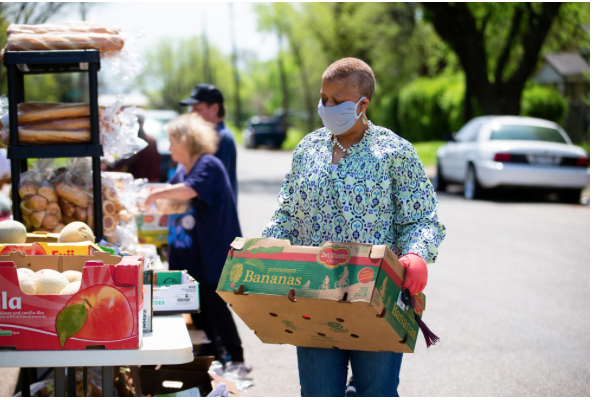CommentsCOVID ANALYSIS - As our country approaches 1 million deaths from COVID-19, it can feel impossible to wrap our heads around such a devastating figure.
But it’s essential if we want to treat the pre-existing conditions that made it so deadly.
In the beginning, many thought the pandemic would be “a great equalizer,” since the virus doesn’t distinguish between rich and poor. But the tragic reality is that our economic and public health systems do discriminate.
A coalition of researchers convened by the Poor People’s Campaign recently published a report making this reality plain.
The researchers define poverty to include all those living up to 200 percent of the official poverty measure, which has long been considered too low to capture those who struggle the hardest to make ends meet.
Using this measure, they found that COVID-19 death rates in poorer U.S. counties were nearly double those wealthier counties.
The gap was even bigger during the worst phases of the pandemic. During the dark winter of 2020-2021, four and a half times as many people in poorer counties died. During the Delta phase, that number shot up to five times.
Vaccination rates tend to be somewhat greater in wealthier counties, but this study looked at counties where vaccination rates topped more than 85 percent. So vaccination can’t account for the disparity.
What can account for it is poverty. The over 300 counties with the highest death rates had average poverty rates of 45 percent.
These counties include 30 million Americans of every color. Latinx Americans make up about a quarter of their population, while their Black population is about double the national average. What’s more, these counties are home to nearly 30 percent of all Indigenous people in the United States.
They’re also home to many poor whites. Although COVID-related deaths fell disproportionately on people of color, these poorer white people suffered the most deaths.
Experts and impacted people testified recently about these findings in Washington, D.C.
“At times, our county’s rate of COVID hospitalizations and deaths led the nation,” said Bruce Grau of Wausau, Wisconsin. “In the first six months of the pandemic, nearly all of the residents in just one nursing home died penniless and alone.”
“Because I don’t have money, it was 17 days before they told me I had COVID,” testified Tyrone Gardner of Goldsboro, North Carolina. “We were slaughtered for the almighty dollar, and we won’t be sacrificed anymore,” declared Pamela Garrison of West Virginia.
“It was hard for us to get the vaccine,” recalled Vanessa Nosie, a member of the Apache Stronghold in New Mexico. “Our lives aren’t valued. They look at us like it doesn’t hurt that we don’t survive.”
“The findings of this report reveal intentional decisions to not focus on the poor,” summed up Reverend WIlliam Barber, co-chair of the Poor People’s Campaign. “We cannot say that this is because of individual choices or behaviors.”
Instead, he declared, “something deeper is at work: systems that prey on the poor — poor white people and poor people of color.”
The lessons of this pandemic are brutal and myriad. One of its most important is that when a public health crisis runs headlong into systemic inequities in wages, wealth, and health care, the result is mass death among those the system is rigged against.
The Poor People’s Campaign has been mobilizing Americans across the country to un-rig this system. “This data is a wake-up call for this nation to heed the calls of the Poor People’s Campaign,” said John Cavanagh of the Institute for Policy Studies.
This summer, the campaign is organizing a mass mobilization of poor and low-income people in Washington, D.C. to fight back. On June 18, thousands of poor people and their allies will arrive in the capital, calling on lawmakers to treat the pre-existing conditions of a pandemic that’s killed nearly 1 million Americans.
They welcome all to join them.
(Karen Dolan directs the Criminalization of Race and Poverty Project at the Institute for Policy Studies. This op-ed was distributed by OtherWords.org.)















